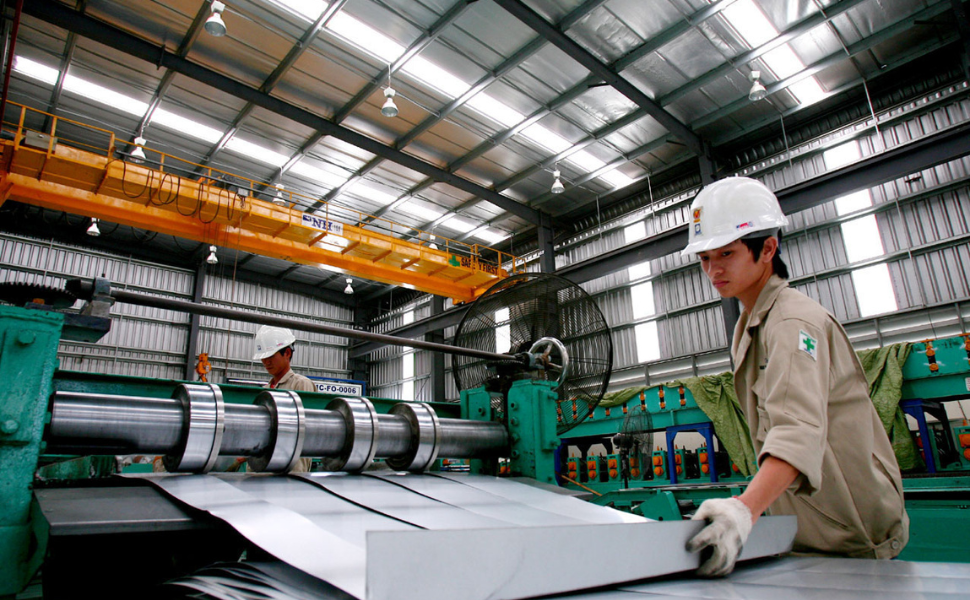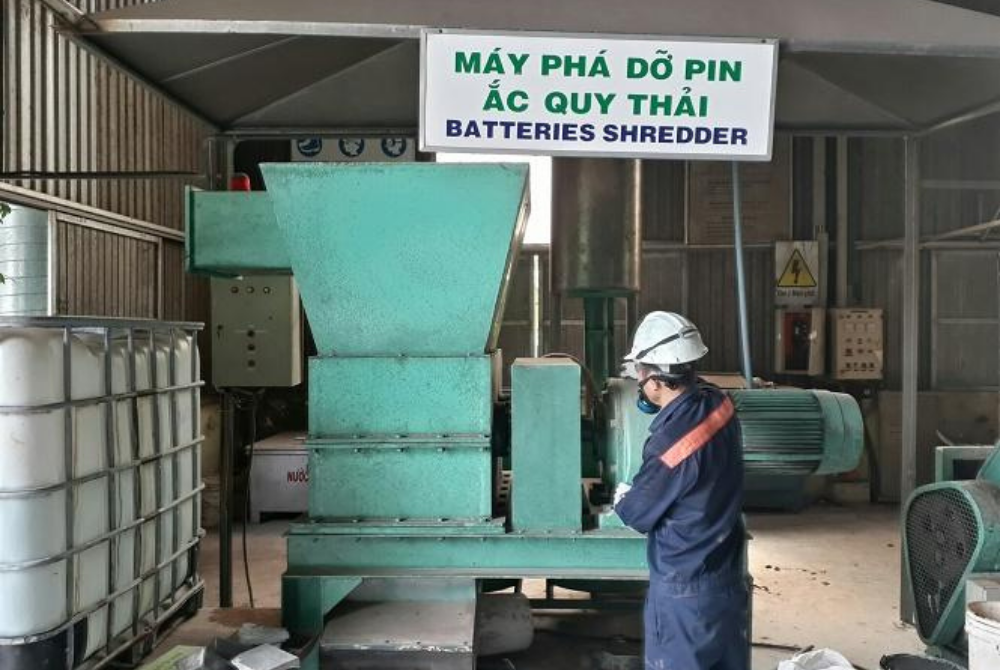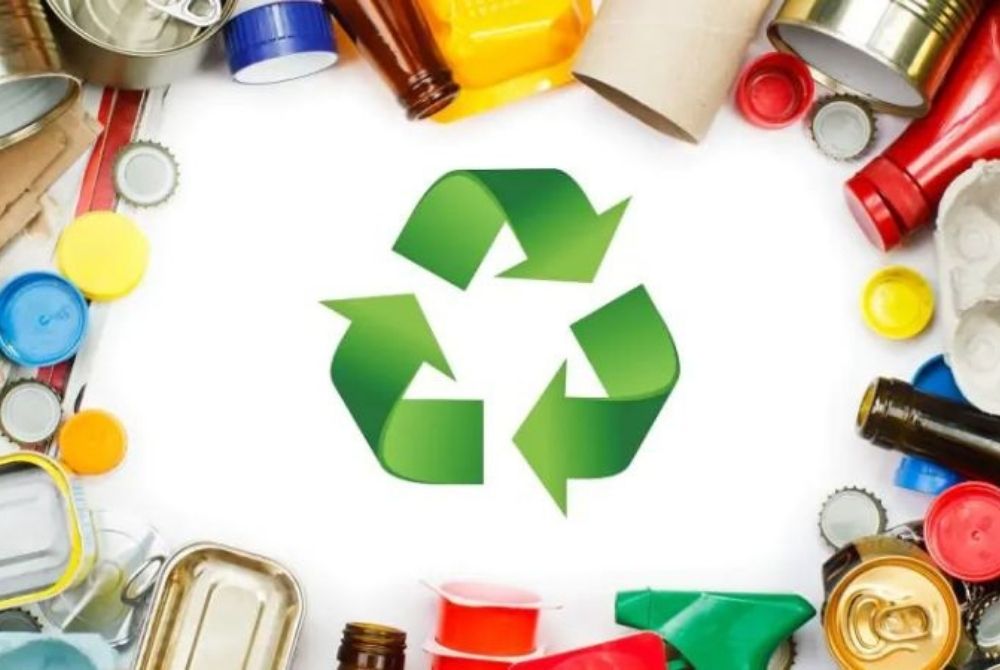Steel and Cement Industries catch Green!
Steel and cement production are said to be significant carbon emitters. Facing the challenge of reducing emissions and aiming for a net zero emission target by 2050 requires enterprises to change and innovate from thinking to production lines.
Primary source of CO2 emissions
The Intergovernmental Panel on Climate Change (IPCC) estimates that heavy industry emits 27% of all CO2 emissions worldwide, making it the second-largest source of emissions behind the power sector. Cement is the most enormous industrial waste, followed by steel, iron, and petrochemicals.
Currently, 60% of industry emissions are caused by four common commodities used in infrastructure development: chemicals, iron, steel, cement, and aluminium. By 2050, 470 billion tons of CO2 emissions will come from the building industry alone worldwide.

Steel plate production in Hai Duong Industrial Park. Photo: Hai Linh
Slag and fly ash are cement alternatives and additives, and the clinker grinding process accounts for the remaining half of CO2 emissions in the cement sector, according to experts.
For the purpose of producing electricity on-site, add more fuel. With a high clinker percentage, some cement manufacturers are still actively developing PC40 and PC50 cement products. These cement varieties release 870 kg of cement per ton into the atmosphere on average.
The high consumption of raw materials in Vietnam's steel industry, according to Chu Duc Khai, Chairman of the Vietnam Metallurgical and Foundry Science and Technology Association (VFMSTA), is one of its distinguishing features.
Blastoff furnaces that employ coke are the primary source of high greenhouse gas emissions (GHG). Additional pollutants in wastewater, noise, dioxin/furan and other POPs, heavy metals, dust, NOx, SOx, and other emissions are also connected.
According to statistics from the World Steel Association (WSA), the world's steel billet production is currently applying two leading technologies: blast furnace - blast furnace (BF-BOF) accounting for 70% and electric arc furnace (EAF) accounting for 30%. Vietnam's steel industry is applying 3 technologies to produce billet BF-BOF technology (60%), EAF (30%), and IF induction furnace (10%).
In the carbon neutral trend, coal contributes to about 70% of global steel production (2022 is 1.878 billion tons); CO2 emissions are higher than the amount of steel produced (about 2 tons of CO2/ton), accounting for 7 - 9% of global emissions (3.7 billion tons of CO2). Therefore, it is only possible to replace some steel materials; the forecast demand in 2050 is about 2.2 billion tons. Therefore, CO2-free steel production requires vast amounts of green energy, and increasing green energy production requires enormous amounts of steel.
"The primary industrial source of CO2 emissions is steel production. Thus, CO2 capture, use, and storage (CCUS) must be implemented as soon as possible in order to meet net-zero targets. By 2070, CCUS will help the steel sector cut GHG by 31% or 800 million tons annually."
Greening Activity
Chu Duc Khai, the Chairman of the Vietnam Association of Casting and Metallurgy Science and Technology, states that the steel industry must Green all business and production activities in order to meet the 2050 net zero emissions target. The Ministry of Industry and Trade and CBAM require GHG inventories if you wish to export to the EU. In addition, the most advanced methods are used to guarantee realistic compliance and efficacy in preventing and controlling pollution (BATs/BEP) in order to save energy costs, save the environment, and lower inflation. GHG?
The Vietnam Cement Association (VNCA) suggests reducing carbon emissions in cement production through four stages: lowering the clinker mineral creation temperature with mineralisation additives or more active materials, minimising heat loss to the environment, ensuring the actual heat cost is close to the theoretical heat for clinker firing (423,561 kcal/kg).
Kiln waste heat (WHR) power generation systems can save costs and reduce CO2 emissions. However, consumers rarely use cement with low clinker content, making it crucial to reduce the clinker content in cement production.
Experts suggest reducing heat during clinker firing as the most accessible option due to available technology and equipment. Limiting emissions during production and consumption is a mission for enterprises with a global focus on Green Growth.
Source: Moitruongvadothi.vn












